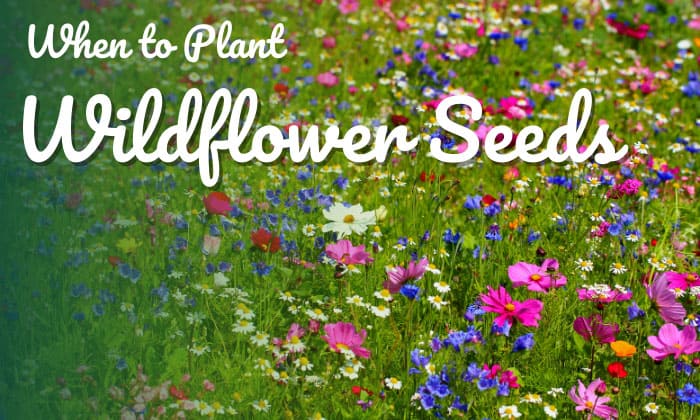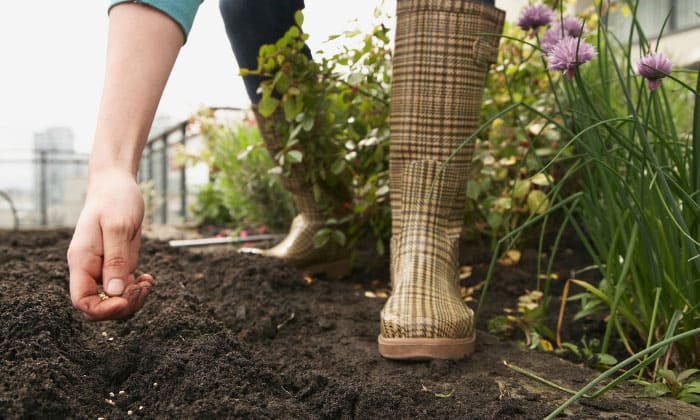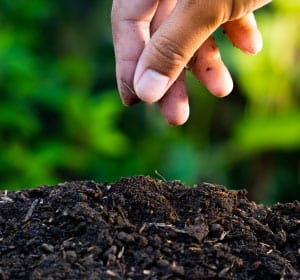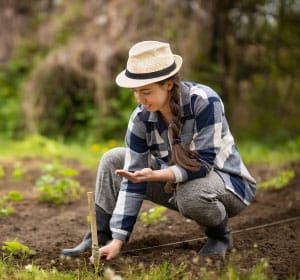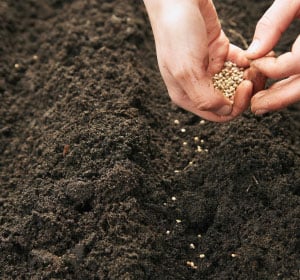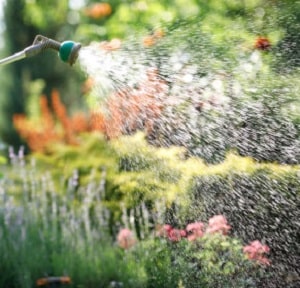Wildflowers naturally bloom in the wild and encompass hundreds of species of plants, making them an excellent option for adding colors to gardens. In determining when to plant wildflower seeds, you must consider your climate and weather conditions for successful gardening.
But generally, the best time of year for sowing wildflower seeds is in the fall, from September to November, or in the spring, from February to June. Read through the tips below to plan your meadow.
Table of Contents
Best Time to Plant Wildflower Seeds
You can sow wildflower seeds in both spring and fall.
However, fall is generally the better option, as wildflowers self-sow naturally during this season and will produce blooms two weeks earlier if grown in autumn rather than in spring.
The lack of pressure from weeds in fall also means gardeners can delay weed removal until next year, saving them time doing manual work.
That said, growing wildflowers from seed in the spring has its own merits. The plants will have plenty of time to establish themselves before winter, away from the heat of the summer sun.
Spring is also preferable if you live in cool hardiness regions like zone 1 to 3, whereas those in zone 4, 5, and up to 11 will do better with fall or winter planting.
Seasonal recommendations aside, check out the guidelines below to narrow down your gardening dates.
1. Plant wildflowers from September to November or until the first two frosts. Winter-sow seeds in January and February.
There are several rules regarding fall planting wildflower seeds.
- The first is to sow them after temperatures dip below 45℉, when you’re certain the weather is too cold to enable germination in the fall, so their shoots won’t be killed off by the impending frost. Typically, this would be from late September until the first or second killing frost (when temperatures reach 24℉ and lower).
Follow this guideline if the soil in your location stays frozen for more than two months. Those in the Northeast like in PA, in NY, or in the Midwest (such as in Illinois and Michigan), and the Rockies certainly fall under this category.
- On the other hand, in regions where the ground does not or hardly freeze, such as southern states or places like California, south Florida, and south Texas, you can sow seeds any time the soil is cool enough.
In these locations, January and February tend to be the best months for gardening due to their seasonal rainfall that pushes seeds into the soil and lowers the heat.
- Outside of these regions, though, 60 to 90 days before the first frost is the rule of thumb for warm states with moderately cold winters.
2. Plant wildflower seeds in March to May outdoors. Sow seeds indoors approximately eight weeks before the last frost.
For both warm and cold climates, it’s best to spread wildflower seeds after the last frost when soil temperatures measure 55 to 70℉.
55 degrees is the minimal warmth level required for germination, so if you sow seeds earlier when the weather is cool, your flowers won’t grow.
Plus, it is vital to protect young seedlings from harsh spring frosts that can kill them, which is why for those who want to plant earlier, we recommend starting seeds indoors before the final frost and moving them outside after.
When to sow seeds this way depends on the flowers you choose, but the common species for indoor planting are:
- cleome (six weeks before the final frost),
- snapdragon (six to eight weeks before said date),
- and alyssum (eight to ten weeks before the last spring frost).
Other wildflowers you can grow following this method are amaranths, marigolds, zinnias, and strawflowers, to name a few.
With that said, below is the planting time for different hardiness zones. March to June are the most common months for planting, with February gardening being possible mainly in the western region or places near Seattle, WA or near Washington like Idaho and Oregon.
| Hardiness zone | Spring planting (outdoors) | Fall planting |
| Zone 1 | May and June | N/A |
| Zone 2 | May | N/A |
| Zone 3 | Mid-April – mid-June | Spring is preferable, but you can also plant from August 15 to October 1 |
| Zone 4 | September to mid-October | |
| Zone 5 | ||
| Zone 6 | Mid-March to mid-May | Mid-September to November 1 |
| Zone 7 | N/A | Mid-September to mid-November |
| Zone 8 | October 1 – December 1 | |
| Zone 9 | October 1 – mid-December | |
| Zone 10 | ||
| Zone 11 |
3. When to plant annual and perennial wildflowers and mixes?
Annual and perennial wildflower seeds can be grown in both spring and fall. The same fact applies to flower mixes, but perennial packs will suit fall gardening better, while annual varieties adapt better to spring.
Tips for Successful Wildflower Planting
1. Site selection and preparation
- Select a site with six hours of full sun per day. Shade-tolerant varieties may cope with just four hours of sunlight, while full-shade wildflowers will need three hours of exposure or less. Make sure to check your seed package to know the growing requirements of your plant.
For those who live in western US, give wildflowers four hours of sunlight per day for regular varieties and two hours of UV light for full-shade cultivars.
- No matter where you are, ensure the soil is well-drained. If sowing seeds on a hillside, the slope should be no steeper than 45 degrees.
- Planting wildflowers without tilling is ill-advised, as seeds need close contact with soil and a weed-free location to thrive. Use a rototiller or tractor and herbicides to prepare the soil and eliminate nuisance plants that compete with your wildflowers for nutrients.
2. Seed sowing method
In a bucket, mix wildflower seeds with dry sand in a 1:8 ratio. You can use white builders’ sand to make the seeds easier to spot and distribute, then separate the resulting mixture into two halves.
To sow wildflowers, walk across the yard from left to right while throwing down the first half of the seeds with your hand. Then move in the opposite direction while distributing the rest of the wildflower seeds.
Next, apply light pressure on the soil using your feet or a lawn roller. This step ensures quicker sprouting and prevents the seeds from being blown around. However, do not bury the seeds, as they may not be able to push their way up when sprouting.
For those wondering how long for wildflower seeds to germinate, two to three weeks is the average timespan.
3. Watering and maintenance
Wildflower germination will happen quickly if you give the soil ¼ to ½ inch of water every seven days. In fact, regular irrigation is crucial during the first six weeks after planting, particularly if there’s no rain.
Checking for the presence of weeds is also a must. Anytime you see them in the field during the growing season, cut them off with scissors or pull their roots up so that they don’t crowd out your plants.
You should also never cover your wildflowers, unless the seeds are on a slope or somewhere windy. In such cases, protect them with straw and not peat moss or hay.
Frequently Asked Questions
What are the easiest wildflower seeds to plant?
For first-time gardeners, consider the following wildflowers which are straightforward to grow: purple coneflowers, zinnias, shasta daisies, blanket flowers, morning glories, and cosmos.
Can I scatter wildflower seeds on grass?
No. You have to remove the grass first so that your wildflower seeds don’t have to compete for sunlight and nutrients.
Conclusion
When to plant wildflower seeds and how to sow them are helpful knowledge to have if you want a flower meadow right in your backyard. In short, germinate wildflower seeds by giving them plenty of sunlight and water and compressing them into the soil.
These plants are low-maintenance enough to thrive without the need for fertilization.
If you need more details regarding the Wildflower planting calendar in Zone 5, Please click here!

Hi, I am William – Floridayards’ digital content creator. My job is to find answers to all your concerns with thorough research and our team’s expert advice. I will also bring you honest reviews on the best products and equipment for raising your beautiful garden. Please look forward to our work!


